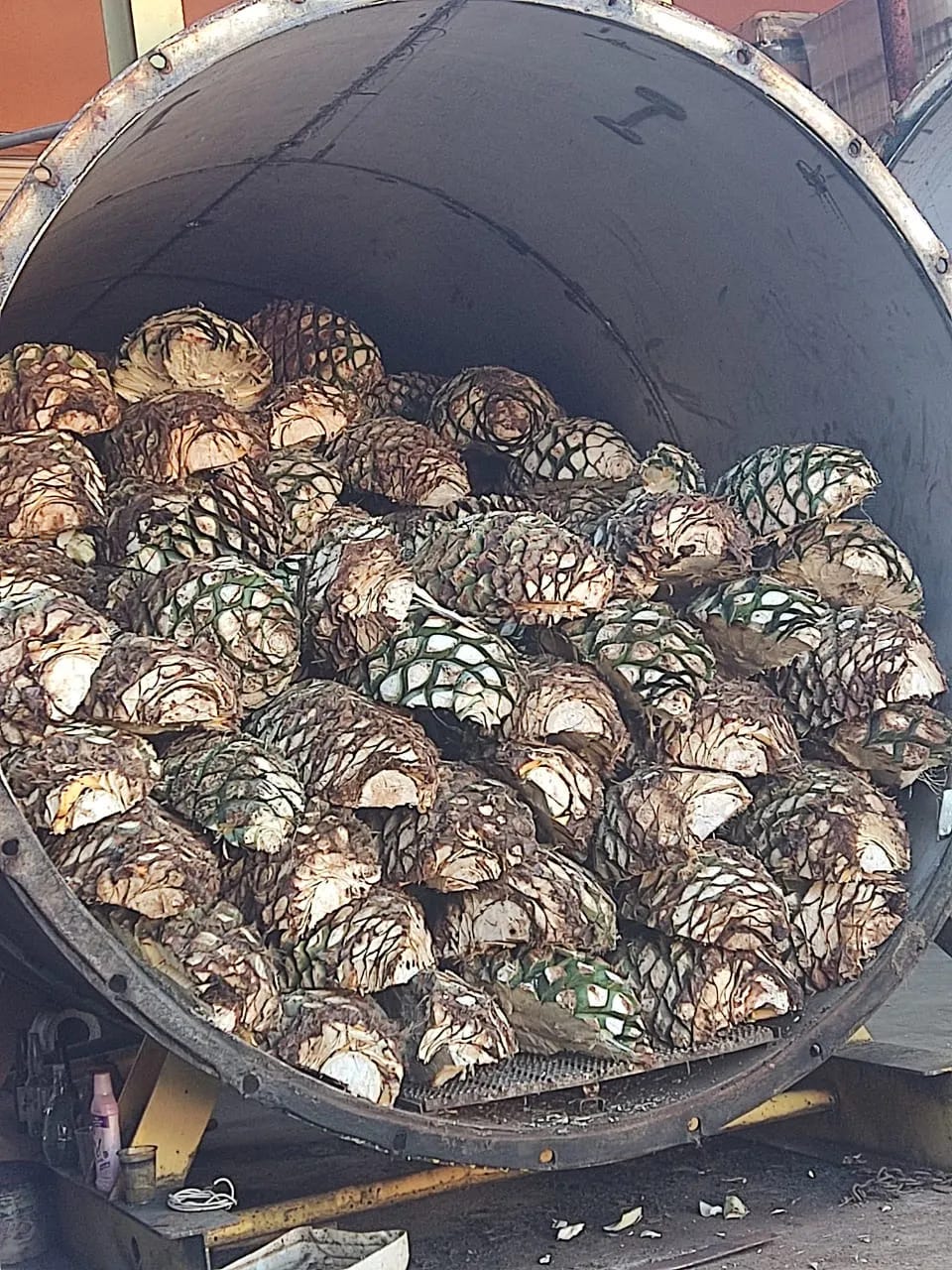Tequila vs. Mezcal: A Deep Dive for Agave Aficionados
Cracking the code of Mexico's most celebrated agave spirits.
Hola Agave Aficionados!
Welcome back to another edition of Agave Talks! Remember that video I posted last week on my personal Social Media showcasing our farm and a Jimador harvesting a beautiful Agave Tequilana, also known as the Blue Weber Agave? One question that sparked my interest (and hopefully yours!) was whether this agave could be used to make Tequila, even though it was produced in Zacatecas, Mexico. The answer? No. But this question opened a fascinating door: understanding the true difference between Tequila and Mezcal.
Think of Tequila as a VIP member of the Mezcal family, much like how Scotch and Bourbon are specific types of whiskey. Mezcal is the broader category, encompassing any spirit distilled from agave plants. Tequila, on the other hand, is a more exclusive club with different rules. It can only be produced in specific regions of Mexico and must use at least 51% Blue Weber Agave. There are even some truly premium Tequilas made with 100% Blue Agave, showcasing the entire agave's potential.
Now, let's delve into the world of Mezcal. This spirit boasts incredible diversity, as it can be crafted from over 200 different agave species, including the Agave Tequilana aka Blue Weber Agave! Imagine that! Mezcal production also has its own set of regulations. The Mezcal Regulatory Council dictates that "Mezcal" can only be used for spirits made from 100% agave, originating from specific Mexican states and Zacatecas is one of them.
12 most common Agaves to make Mezcal
Here's a sneak peek at the impressive journey from agave plant to spirit, shared by both Tequila and Mezcal. The agave itself takes a remarkable 6-10 years (sometimes even longer!) to mature, much like a wise old friend. Despite its prickly appearance, the agave is actually a succulent, and the heart of the plant, called a piña (because it resembles a pineapple!), is the key ingredient. After the leaves are removed, the piñas are cooked and crushed to release their hidden treasures.
This is where things get interesting! In Oaxaca, a region renowned for its Mezcal, the piñas are roasted in underground pits lined with rocks and fueled by wood fire. This unique process imbues Mezcal with its signature smoky notes, a flavor profile that many agave spirits enthusiasts adore.
However, Mezcal can also be produced using the same methods as Tequila, including above-ground ovens.
Following the cooking stage, both Tequila and Mezcal piñas are crushed to extract their sweet agave nectar. This nectar then undergoes fermentation, where airborne yeast or commercial yeast work their magic, transforming the sugars into alcohol. Finally, distillation takes center stage, with both spirits typically undergoing double distillation in copper or clay pots.
Let's talk Blue Weber Agave, the star ingredient of Tequila. Harvesting this precious plant is a true art form, passed down through generations. Skilled Jimadores use a special tool called a Coa to meticulously remove the leaves, revealing the prized piña at the heart. These piñas are then steamed in ovens, a process that unlocks the fermentable sugars within. After milling and fermentation, the magic of distillation transforms the agave nectar into Tequila or Mezcal.
The final step involves aging in oak barrels. This aging process creates different categories, such as Blanco (young and vibrant), Reposado (rested for smoothness), Añejo (mature with complex flavors), and Extra Añejo (extraordinarily aged for exceptional depth). Each category offers a unique taste experience, from the earthy sweetness of Blancos to the well-rounded character of Añejos.
Now, let's sip and savor the essence of agave! Tequila boasts a delightful spectrum of flavors, influenced by the agave's origin (highlands or lowlands) and region (Jalisco or other authorized areas). Mezcal, on the other hand, is known for its smoky charm, but it can also surprise you with floral, fruity, and earthy notes depending on the agave variety used. And when Blue Agave is the star, the taste profile can be quite similar to Tequila.
My recommendation? Enjoy both Tequila and Mezcal neat, allowing your palate to appreciate their unique flavors. It's a truly rewarding experience!
Here's a quick recap of the key differences:
1. Production regions: Tequila has stricter regional limitations, while Mezcal can come from various designated areas in Mexico.
2. Agave varietals: Tequila primarily uses Blue Weber Agave, while Mezcal embraces a wider range of agave species.
3. Similarities: Both share distillation processes and can utilize Blue Agave, leading to similar taste profiles in some cases.
Join the Movement!
At La Leyenda Mezcal, we are passionate about restoring the Legend of Full Term Blue Agave. We believe in quality over quantity, which is why we are the only brand controlling our entire agave production process. We own our agave fields and harvest our plants only when they reach full maturity, unlocking their maximum flavor potential.
Want to experience the magic of Full Term Agave Tequilana Mezcal? Become a La Leyenda member and enjoy exclusive access to our limited-edition, small-batch spirits crafted with fully mature agave hearts. Our membership program also offers exclusive discounts and behind-the-scenes content about the fascinating world of agave spirits.
Not quite ready for a membership? No problem! You can still explore the La Leyenda difference by purchasing a bottle of our exceptional Tequila or Mezcal. Visit our website and reach out directly to discover the true potential of agave.
Remember, by supporting La Leyenda, you're joining a movement to celebrate and preserve the legacy of Full Term Blue Agave.
Salud! Let's raise a glass to agave excellence, from Mexico to the world!
Subscribe to our newsletter, like and share it with your fellow agave enthusiasts! Spread the love for these remarkable spirits and be part of the Agave Adventure!
🇲🇽🇲🇽🥃🥃🌎🌎
Alejandro Sanchez











